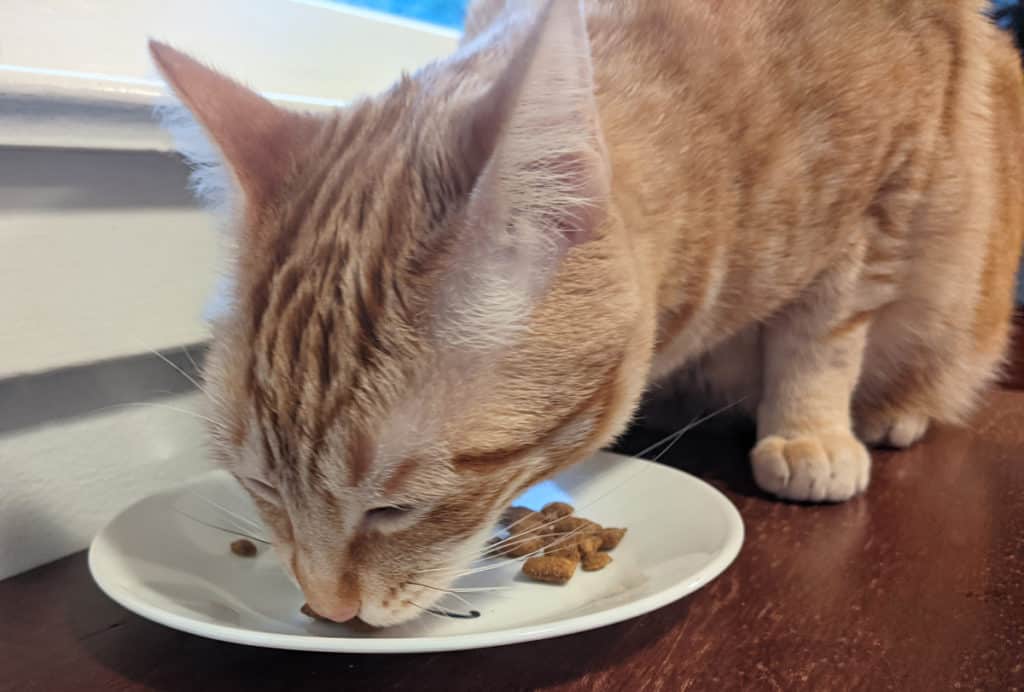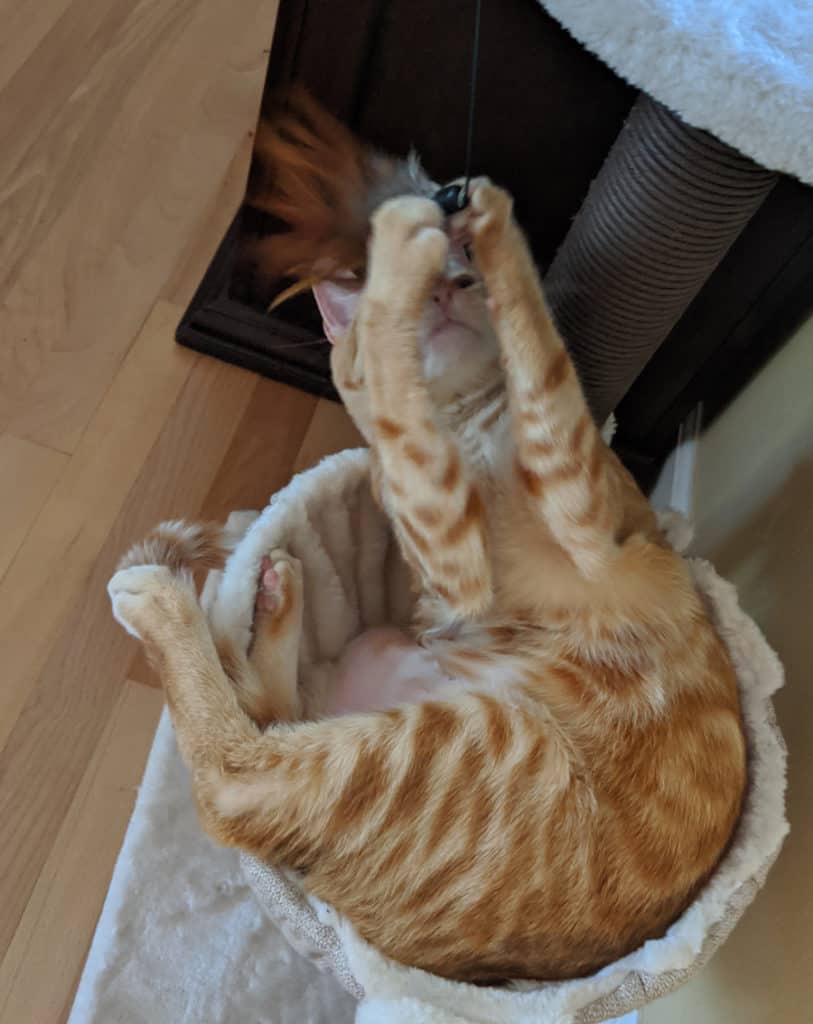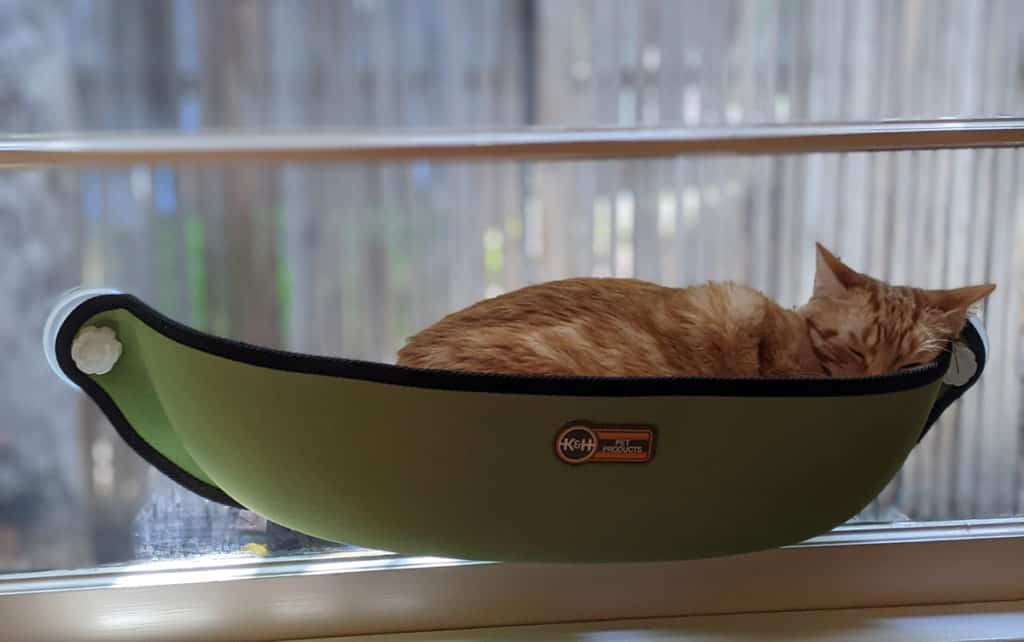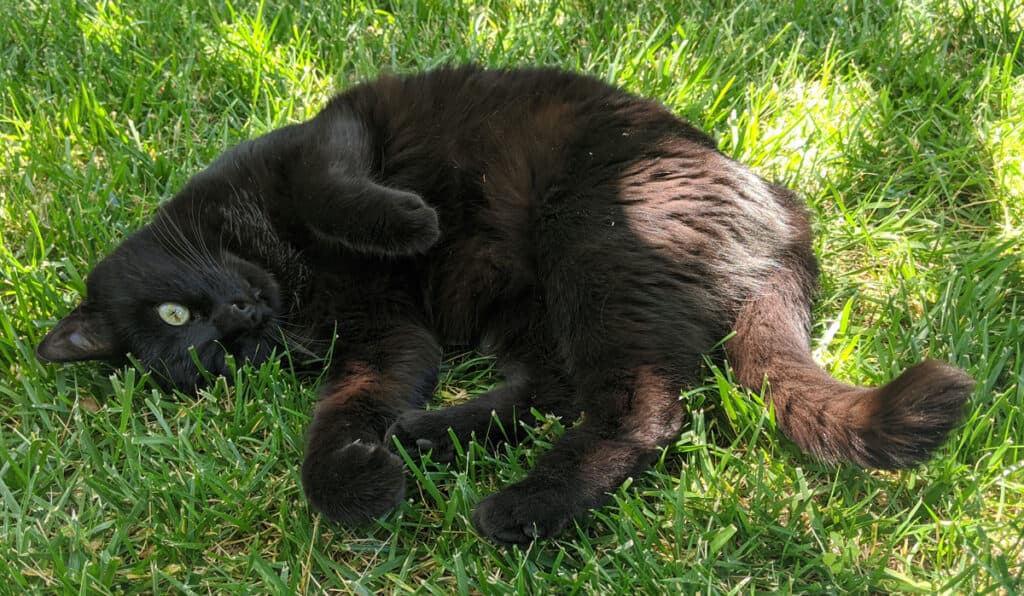Despite the stereotype of domestic cats as solitary and independent animals, these small creatures are both physically and emotionally dependent upon their caregivers for their overall health.
Here are six daily things you should do for your cat’s mental and physical health.
ExploreCats is a participant in the Amazon Services LLC Associates Program, an affiliate advertising program designed to provide a means for sites to earn advertising fees by advertising and linking to amazon.com.
1. Feed Your Cat
Even if you have a cat that roams outside, cats are dependent upon humans for daily nourishment. Cats are not great hunters, and cats that are left to fend for themselves for food tend to end up in poor health.
Make sure you feed your cat two meals a day, every day. Depending on the age and circumstances of your cat, there are different dry and wet cat food options. Consult with your vet for the type and amount of food your individual cat needs every day.
Make sure the bowls you use are flat and wide as to minimize whisker stress.

2. Provide Fresh Water Every Day
Cats are pretty finicky about their water source so make sure you are supplying your pet with a fresh bowl of water every day.
While cats can get some hydration from wet cat food, cats need a supplemental source of water. Cats required 3.5 to 4.5 ounces of water for every 5 pounds in body weight.

Make it a habit of washing out your cat’s water bowl and refilling it with clean water. Over the course of the day, the water becomes dirty with food, insects, and other debris and cats tend to avoid drinking water that is contaminated.
Cats also don’t like drinking water that is too close to their litter box or food bowls so make sure you put your cat’s water bowl in a clean place. My cats love to drink out of the bathroom so I have extra water bowls set up in the bathtub when its not in use.
3. Scoop the Litter Box
Make sure to keep your cat’s litter box clean. Scoop out any clumps of urine and feces. Just as you don’t want to go to the bathroom in a dirty toilet, your cat also wants a clean place.
A good rule of thumb is to have one litter box for every cat you have plus one extra. Make sure you place the litter box in a secluded corner when your cat can go to the bathroom in peace and quiet.
4. Play With Your Cat
A bored cat can become depressed or overeat. Cats need stimulation and active play is one way to achieve that. Figure out what kind of toys your cat loves to play with and spend at least 15 minutes a day interacting with your pet.
Different cats enjoy different toys. I have one cat that loves to chase small felt balls while another cat loves to race after a pointer. Other cats like to chase strings (just make sure they don’t get tangled or eat the string).

Playing with your cat is also important for bonding. The more positive experiences your cat has with you, the more they will bond with you.
5. Groom Your Cat
If you have a long-haired cat, you will need to groom them daily. Even short-haired cats can benefit from regular grooming. Frequently grooming has many benefits and helps your cat to maintain a healthy coat.
Frequent grooming helps to lift loose hair which reduces how much fur your cat swallows when they groom themselves. This lessens the amount of hairballs your cat has to regurgitate.
For long and medium-haired cats, daily grooming prevents the formation of tangles and hair mats which are painful for your cat.
Grooming also helps to remove dust and debris from your cat’s coat.
When you brush your cat, you can also check for physical ailments. If your cat reacts with pain or negatively when you pass the brush over a part of their body, that can indicate an irritation or wound in that area that might need the attention of your vet.
Grooming among cats is also an expression of affection. When you groom your cat, you are strengthening the bond that your pet has with you. Don’t be surprised if your cat also tries to groom you in return.
Make sure you find a brush that your cat enjoys. Grooming should be a pleasant experience and your cat’s coat, fur length, and personality will affect which type of brush or comb they like to be groomed with. My shorthair gray tabby loves to be groomed with a soft silicon brush. My medium-haired black cat hates that brush and prefers to be groomed with a doll brush that has metal spokes.
6. Let Sleeping Cats Lie
The phrase, “let sleeping dogs lie” also applies to cats. Cats spend quite a large portion of their day napping. It’s important not to disturb your cat when they are sleeping, especially when their body position indicates they are in a deep sleep.
Cats need to feel safe when they sleep as sleeping is a vulnerable position to be in. A cat that is not left alone when they need to sleep will become stressed. So, when your cat lays down for a nap, let them be.

You can help your cat feel more comfortable during nap times by providing them with plenty of secluded or elevated spots to rest in.
By being an active pet owner and attending to your cats physical and mental needs on a daily basis, you can help your cat to be as healthy and happy as they can be.







